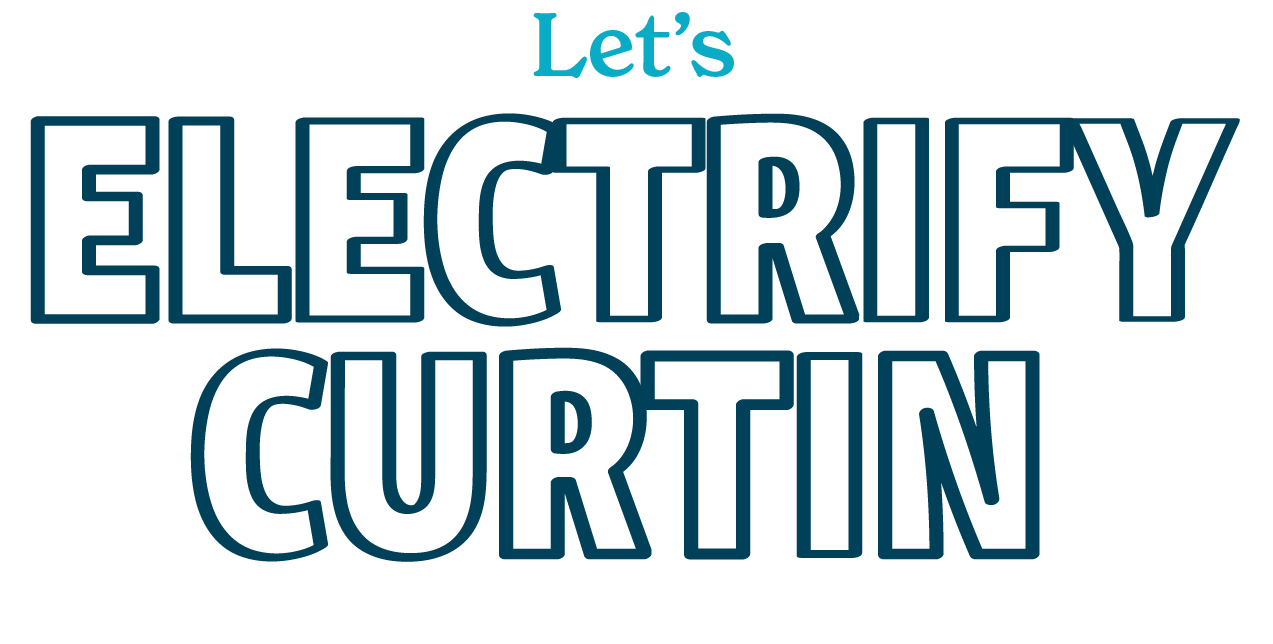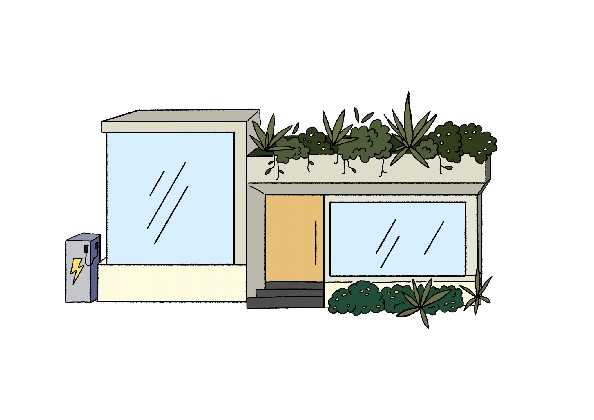BUILDING FEATURES
Energy efficient buildings and retrofits.Let your house do the heavy lifting
An energy efficient building is designed or retrofitted to need less energy to make it liveable.Energy efficient roofs, walls, windows and window coverings better regulate temperature and light. They let in beneficial natural light and air and insulate against uncomfortable outside temperatures.
Many, but not all, energy efficient building features can be retrofitted. Some can by done yourself, others need professional contractors.
Energy efficiency and electrification are easiest when building new or doing a major renovation. If this is on the cards, make sure efficient electrification is part of your plan.
Lower energy bills
More comfortable homes
Emissions reduction
An energy efficient building does the heavy lifting for you. It’s designed and built to be suited in your local climate, making it immediately more comfortable.
BENEFITS
PLANNNING AND PRACTICALITIES
Australia has some of the most energy-inefficient homes in the world.An estimated 80% of Australian homes are rated 2 or less stars out of 10 for energy efficiency. This is similar to living in a tent, in terms of temperature regulation and comfort.
Most Australian homes were built without any requirement for thermal comfort. Minimum energy efficiency standards for Australian homes were only introduced in 2003, at a standard of 3.5 - 4 stars out of 10. In WA, we won’t require new homes to achieve a 7 star rating until May 2025, more than a year behind the rest of the country.
This means most of us live in homes that are far more expensive to occupy and make comfortable than they need to be. The good news is that many energy efficiency features can be retrofitted. They will require some upfront costs, but will give you significant savings long-term.
Source: Sydney Morning Herald
The easiest step to improving energy efficiency is to draughtproof your home. If you have gaps that let in outside air even with doors and windows closed, then your heating or cooling efforts are fighting the outdoors head on.
Gaps and cracks around doors and windows are easy wins – anywhere you can feel a breeze would be a place where you can install seals to reduce air flow and loss of heat (or cool) to the outside.
You can buy gap filler rod or door and window strips for $10 - $50 from your local hardware store.
SEAL GAPS AND DRAUGHTPROOF
If you’re renter, or on a budget, upgrading your curtains and blinds is a cost-effective way to reduce energy costs.Windows lose around 30% of heating energy (in winter) and gain about 75% of summer heat.
Thermal-backed or lined curtains with pelmets provide a covering across the whole window that traps a layer of air, which acts like insulation. Ready-made thermal-backed curtains can start as cheaply as $20 per window.
Tightly fitted cellular blinds significantly reduce heat loss and gain, with up to 20% energy savings. Ready-made versions start at $40 per blind (from IKEA).
UPGRADE YOUR WINDOW COVERINGS
Insulation helps regulate building temperature, keeping the heat out in summer and the warmth in in winter. Installing or upgrading insulation is possibly the most effective efficiency retrofit.Homes typically lose their heat through 3 mechanisms, through the walls, the windows and the roof. For a typical single-glazed home, with standard roof insulation, this works out to approximately an equal three-way split.
Adding insulation or double-glazing can also greatly reduce noise pollution from outside, creating a quieter and calmer living space.
Roofs
If your home has a roof cavity, you can look to install or replace its insulation. Older houses tend to have no or minimal insulation and if present, it will have degraded over time and could be worth replacing with a modern and more effective solution. For a typically sized home, the cost of this will run to around $3-4k, including materials and install.
Roof/ceiling insulation is the most important, as your roof gets most direct sun. The colour of your roof and exterior walls also affect indoor temperature.
White or light-coloured roofs (which reflect the sun’s rays) can cool your home by up to 4°C. Heat reflective roof paint, such as Solacoat can further reduce temperatures.
INSULATE ROOFS, WALLS AND WINDOWS
Walls
If your home is older and has double brick walls, the chances are that there is no insulation between the two layers. Different forms of cavity wall insulation are available which can either be injected from above, or by drilling holes through the bricks to inject.
It’s easier to do this in new builds and reflective EPS insulating panels can also be installed cheaply at this stage. Costs will vary, but would likely be in the range of $3-6k including time and materials for a typical detached home.
Windows
Double or triple-glazed windows have multiple layers of glass with a space between them, which acts as insulation between indoor and outdoor temperatures.
If your home is single-glazed, you can upgrade to double or triple-glazed windows. Depending on the amount of glass in your home, this could run anywhere from $8-$20k for materials and install.
Double glazing should be prioritised for rooms that have the most active heating and/or on south facing rooms that don't get any sun, but are cold and will still let out lots of heat.
Some companies offer double-glazing retrofits that are cheaper than replacing the entire window frame.
Large windows that receive direct summer sun need external shading to reduce heat.
Passive solar design puts energy efficiency right at the heart of architecture. Homes designed and built following passive design principles are comfortable to live in year round because they are adapted to their local climate and take advantage of natural light and warmth.
Passive design impacts all aspects of building design, from material choice (for thermal mass/insulating properties), to orientation, layout and window placement to get the most advantage from sunlight and fresh air.
In the southern hemisphere, this means lots of north-facing windows that get direct sun in winter when the sun in lower in the sky, warming up the room. Western walls, which receive the hottest afternoon sun in summer, will have less windows or be well shaded.
These features are difficult to retrofit, but easy to do from the start, whether building new or doing a major renovation. It may add a 5% premium to building costs, but will save you far more in building operation.
PASSIVE SOLAR DESIGN
An accredited energy assessor can give your home an energy efficiency rating out of 10.If you’re looking at many big changes, a professional home energy audit will help you understand how your home currently performs and identify the best value improvements to start with.
Australia’s current home energy efficiency rating system, NatHERS, is not perfect, but still useful. A higher energy efficiency rating can increase property values, because potential buyers know it will be cheaper and more comfortable to live in.
Improving the energy efficiency of Australia’s existing housing stock will require policies that incentivise retrofits. Two policies that governments are considering are:
Mandatory disclosure of energy efficiency ratings when homes are sold or leased. Transparency will generate competition, help buyers and incentivise sellers.
Minimum energy efficiency standards for rental properties. Rental properties are generally less efficient, as landlords have little incentive to make improvements.
Neither is yet on the cards for WA, but if that changes, expect your retrofits to become even more valuable investments.
HOME ENERGY AUDITS AND RATINGS
RESOURCES
FINANCIAL SUPPORT
The Federal Government's new Household Energy Upgrades Fund can be used to improve the energy efficiency of your home.Find out more at: Household Energy Upgrades Fund | energy.gov.au
Some banks now offer 'green loans' with lower interest rates to build or renovate sustainably.HELPFUL WEBSITES
CONTRACTORS IN CURTIN
Insulation
Double glazing
Draughtproofing
This is not a comprehensive list of contractors in or around Curtin, but an example of some businesses that our volunteers are familiar with. This is not an endorsement of any of these business by Kate Chaney MP or Electrify Curtin. Please do your own research to decide what’s best for you.


